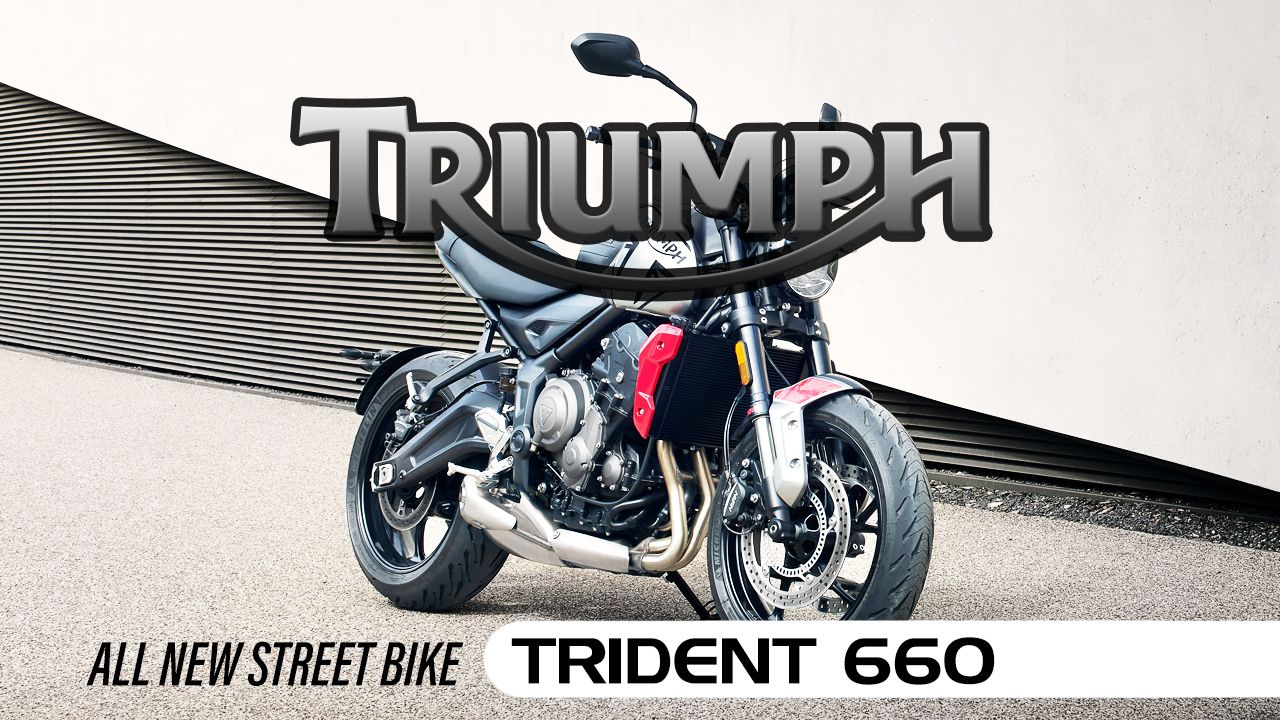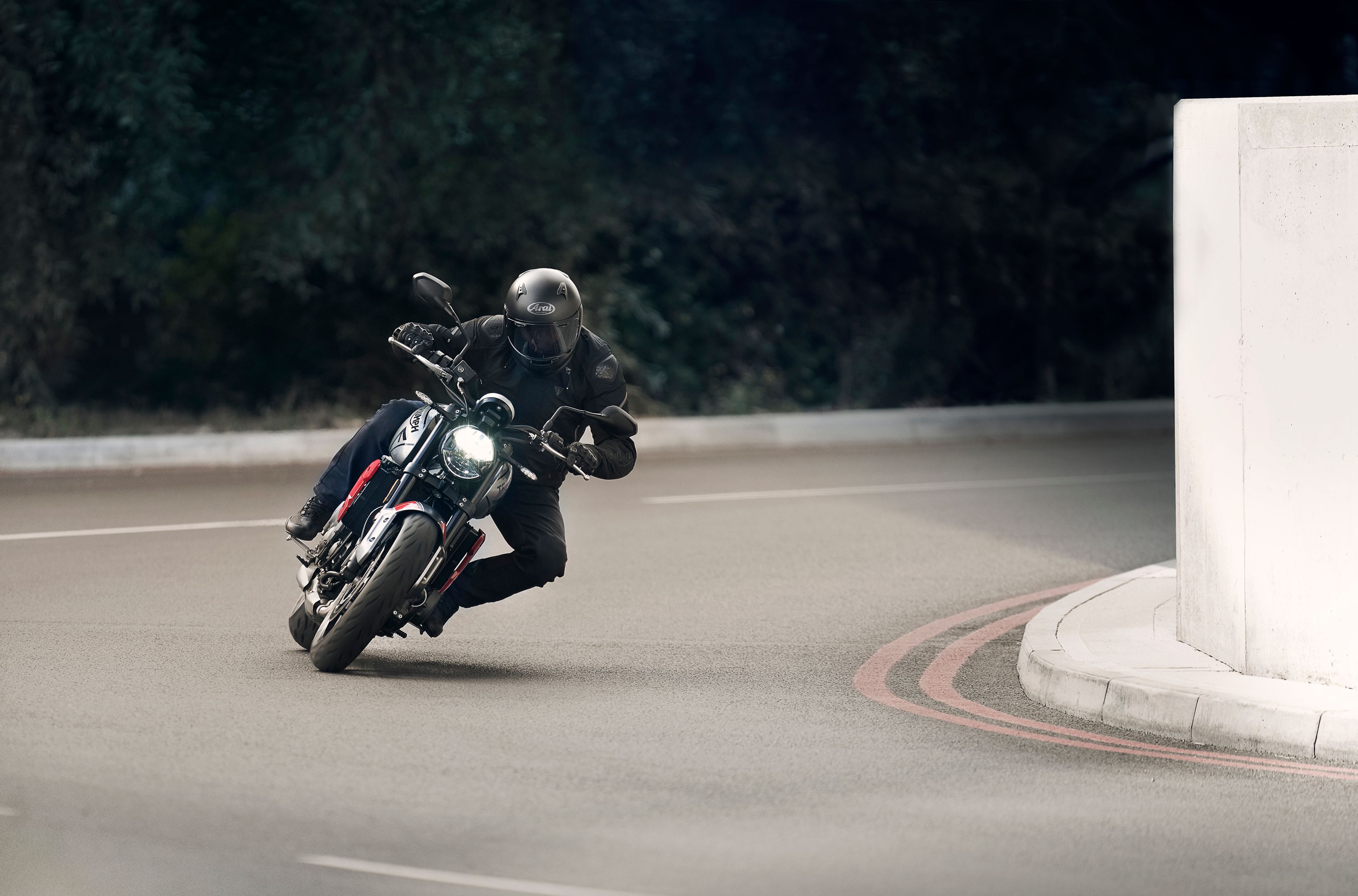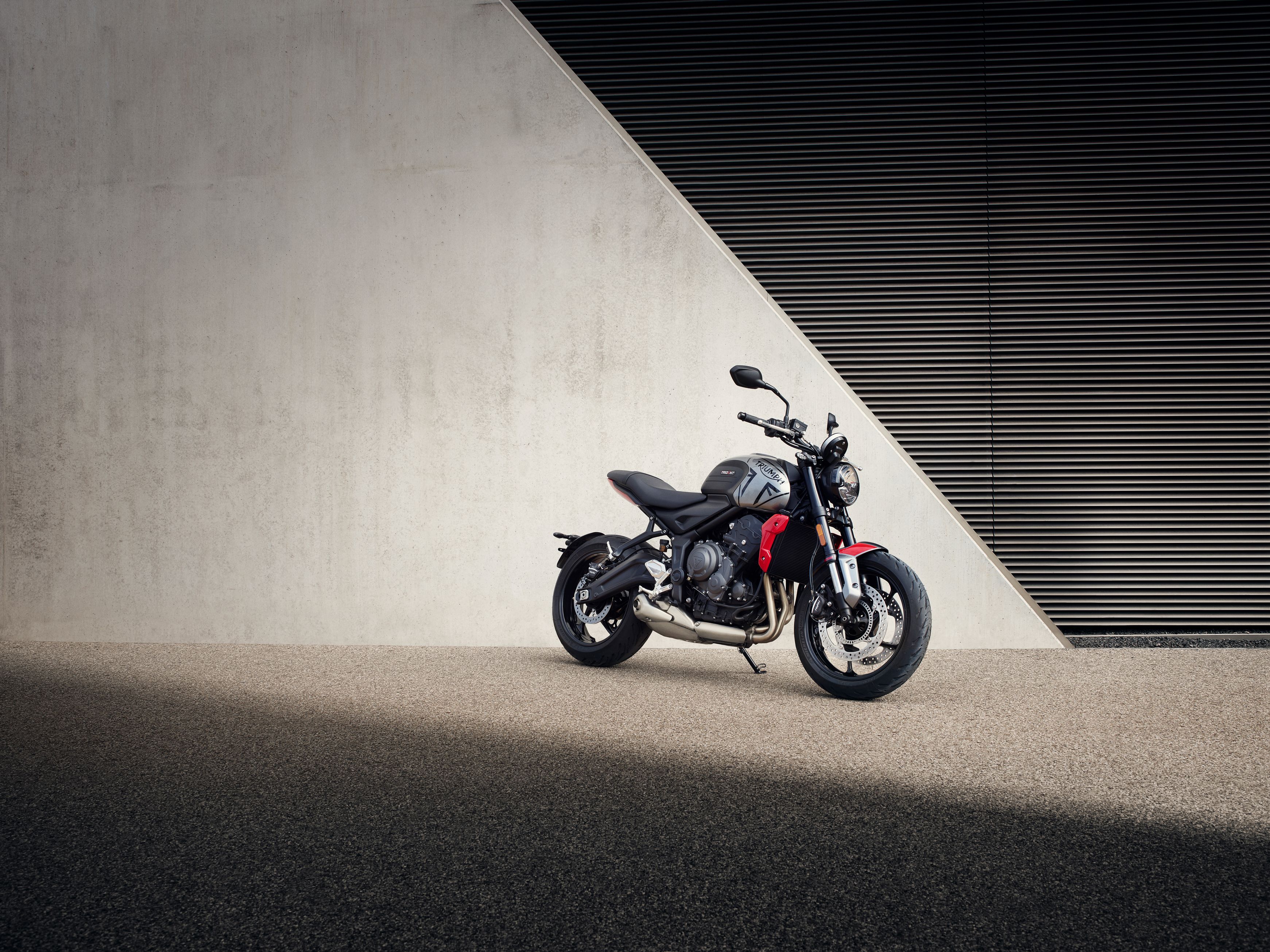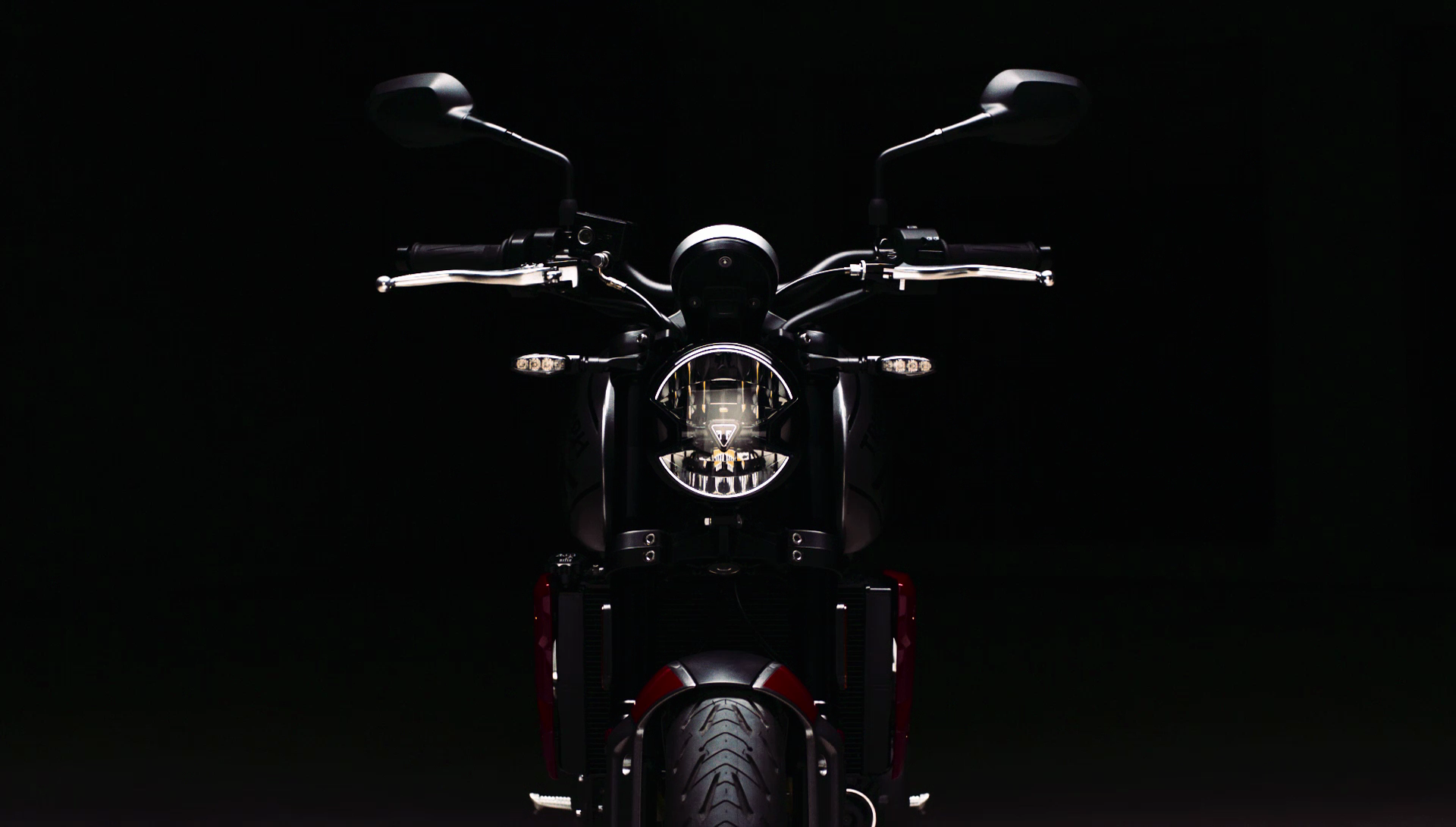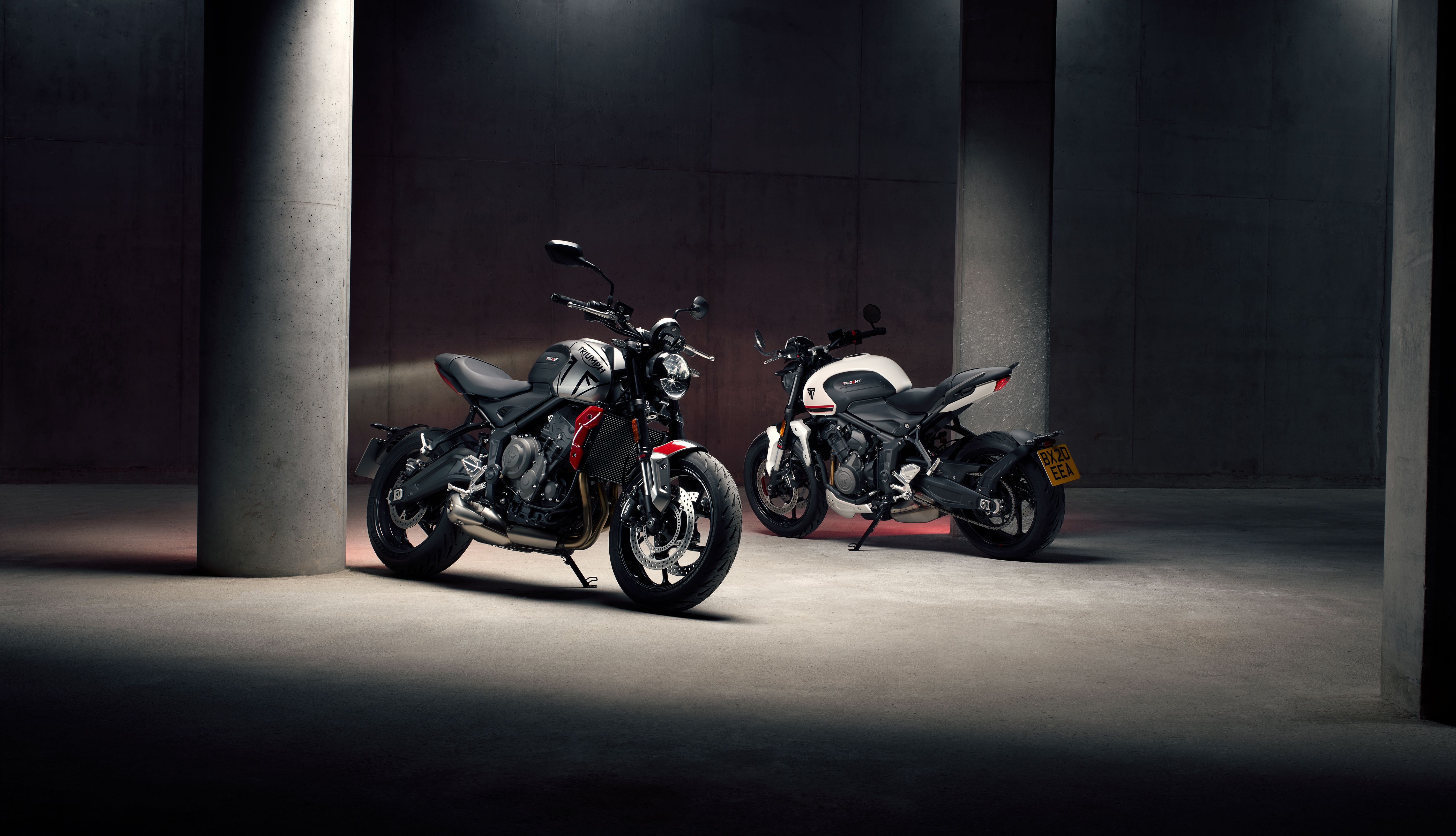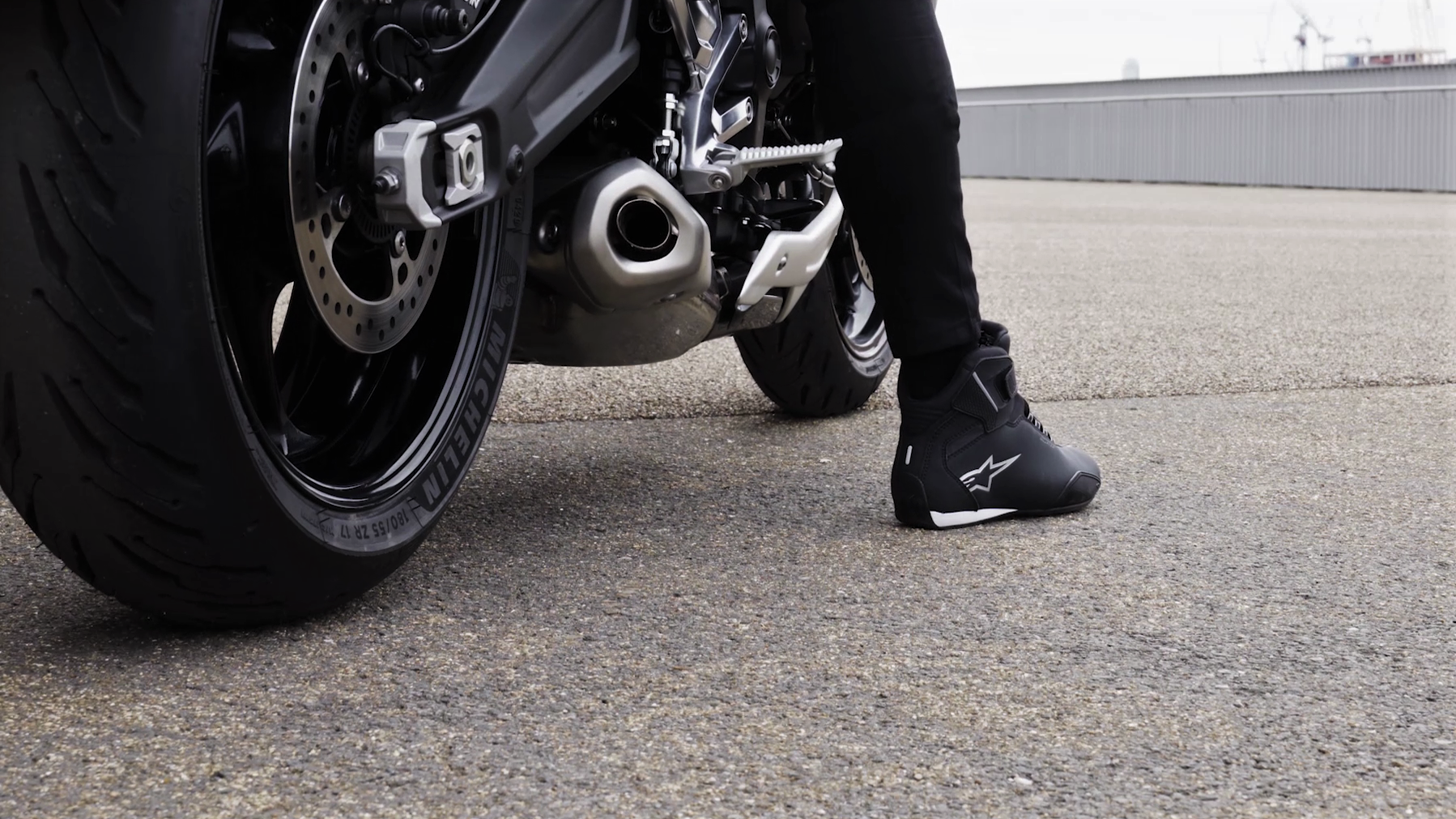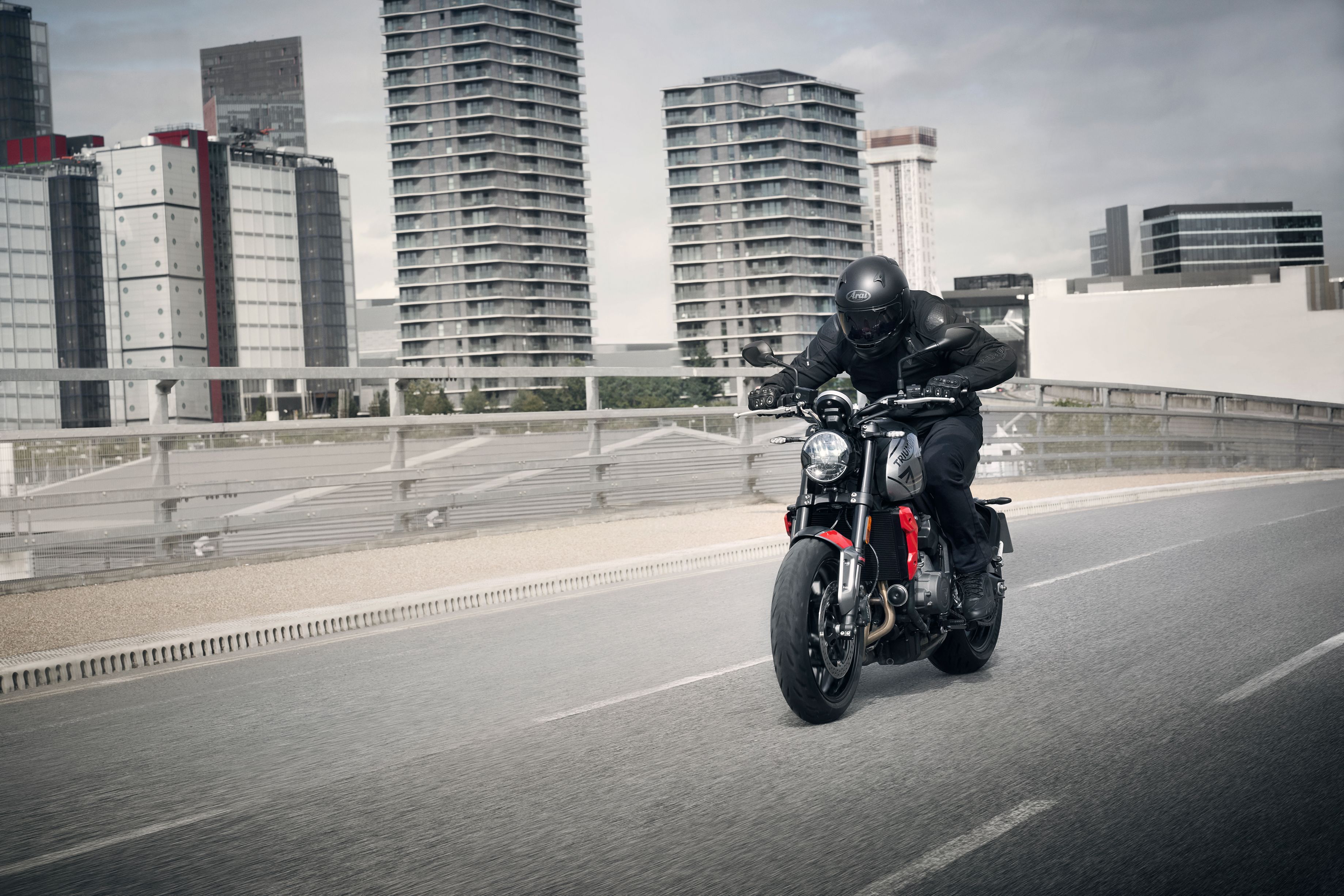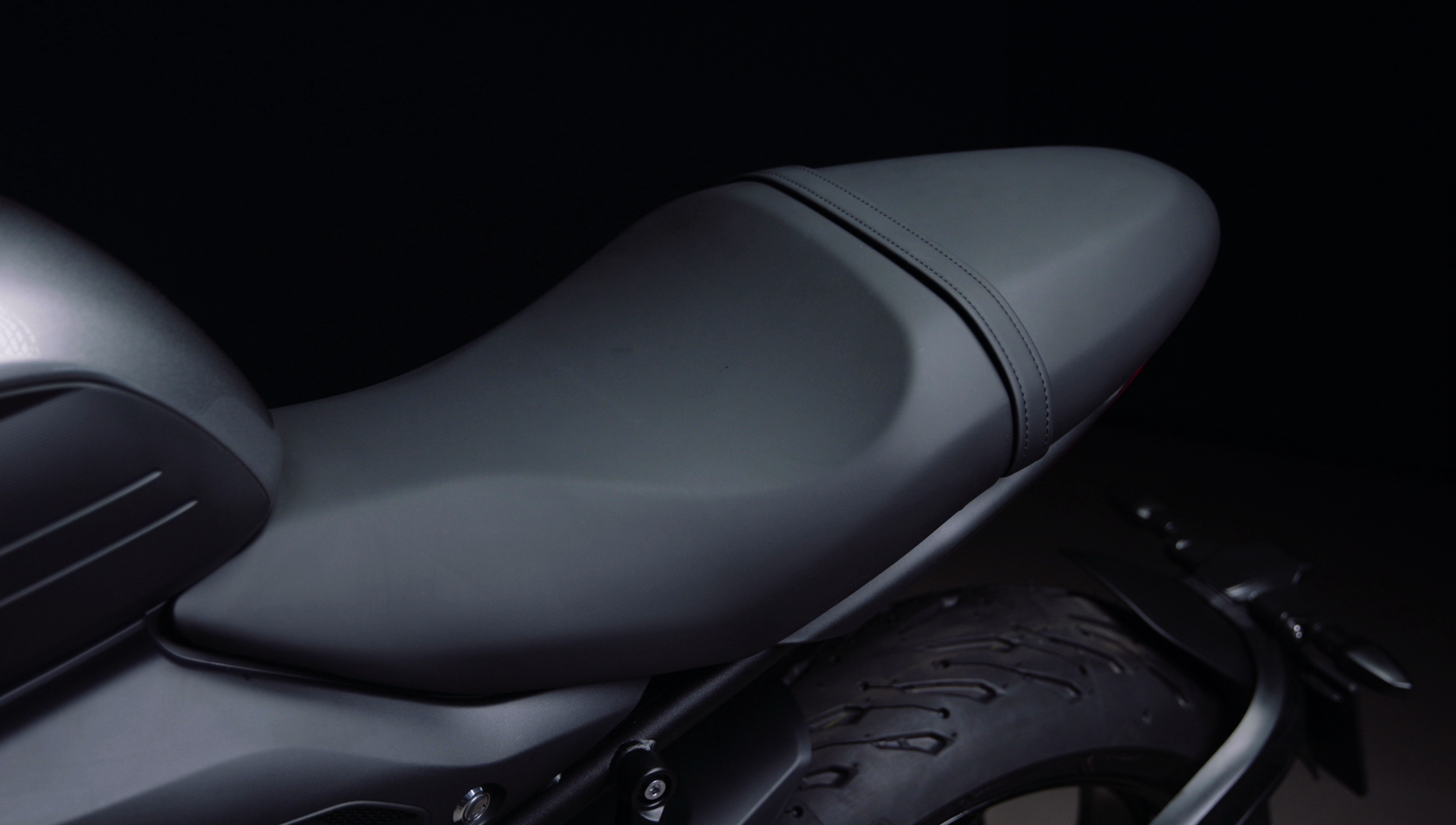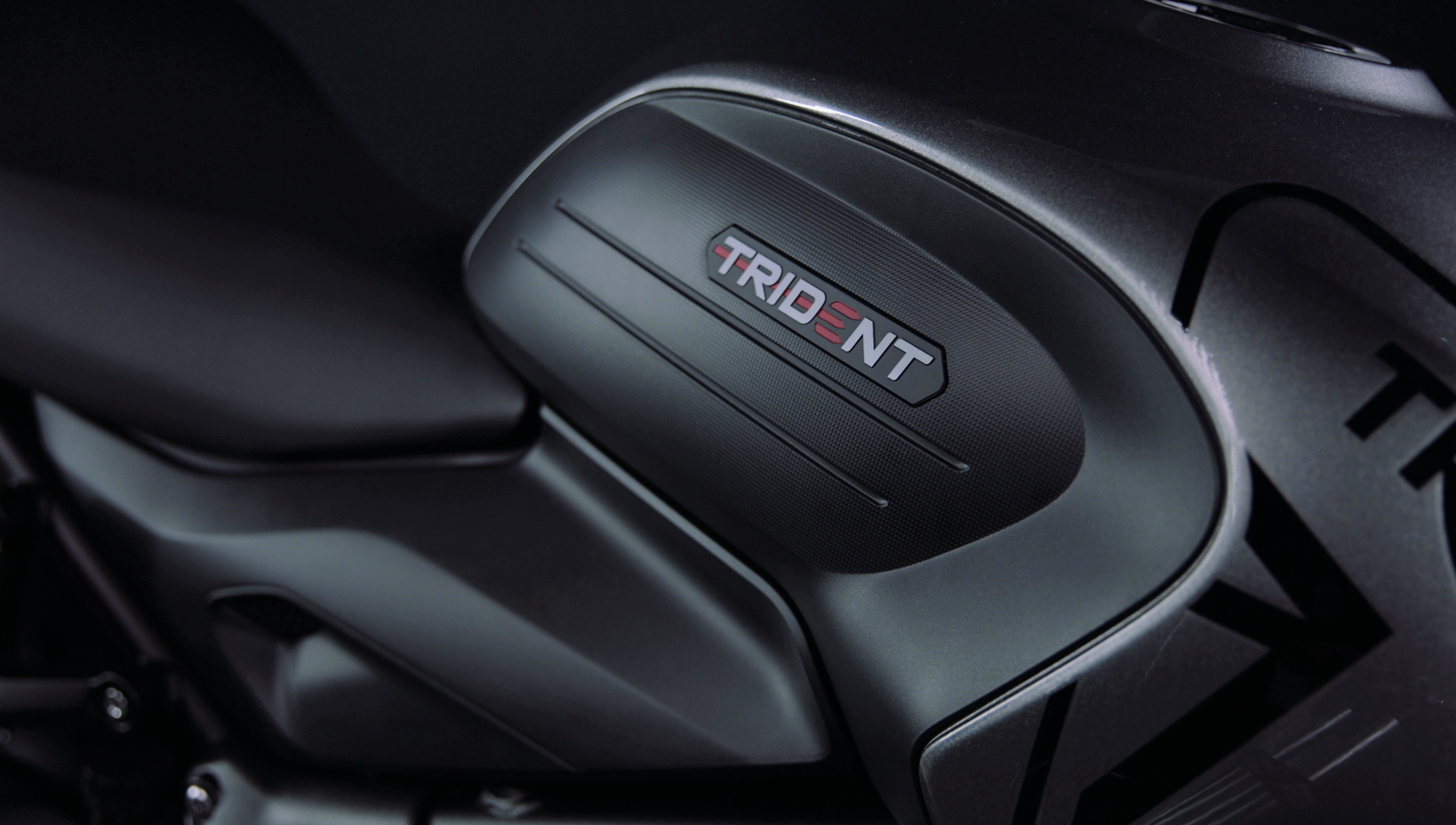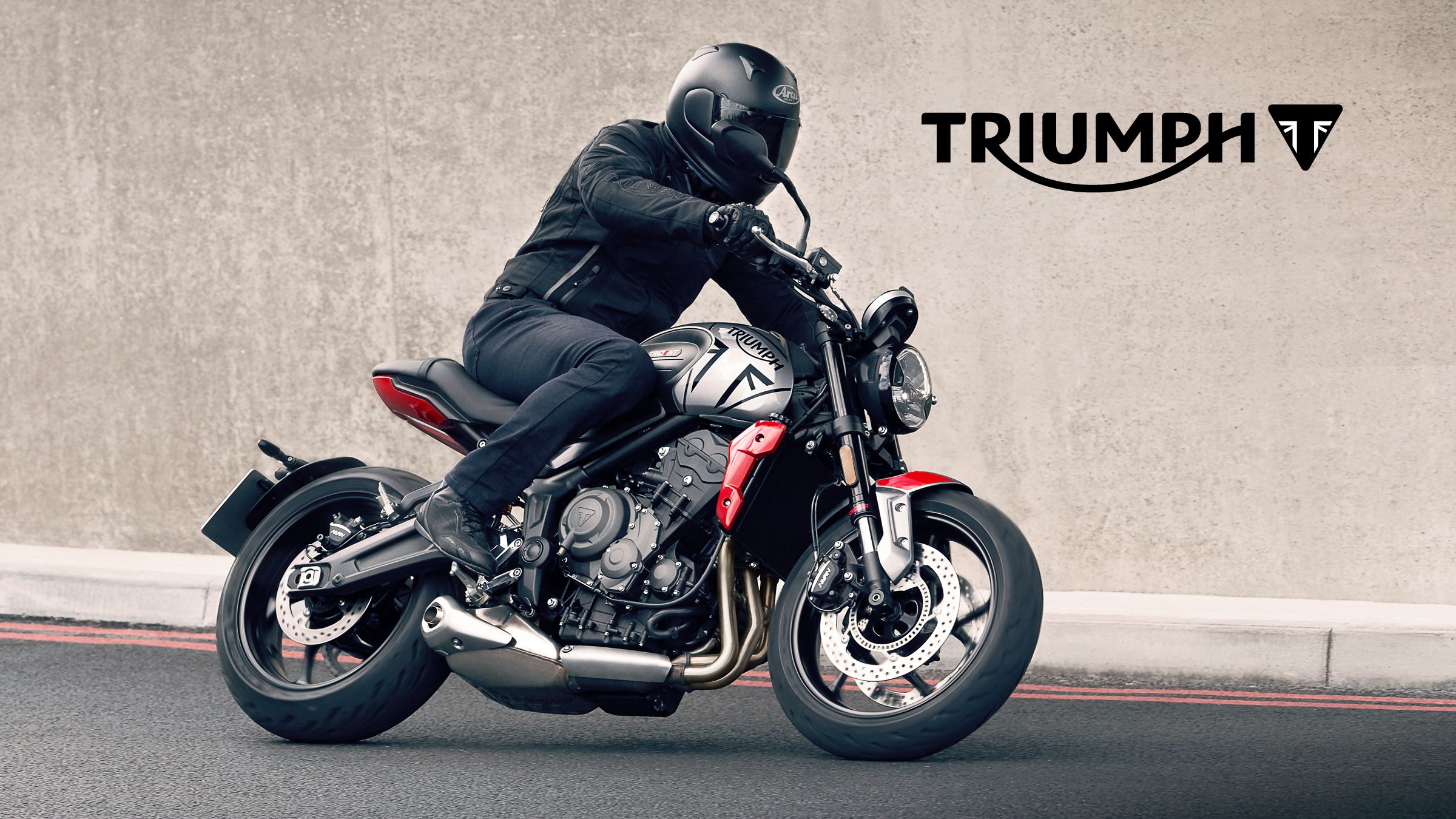Triumph rolled into MY2021 with an all-new street bike in its Trident 660. Just think of this as the British giant's ambassador – or perhaps recruiter would be a more apt as a title – to the entry-level segment. It qualifies for a number of reasons, chief among them is the tractable power delivery, ride-safety electronics, and even the price. Lean, clean, and essential, the new Trident 660 brings a rare level of accessibility to the market, all wrapped up in one sporty package.
2021 - 2022 Triumph Trident 660 Performance and Capability
The engine-electronics suite on the Triumph Trident 660 is excellent at this price point with ride-by-wire throttle control, two riding modes (Road and Rain), and switchable traction control as stock equipment. Triumph powers the Trident 660 with a 660 cc engine, hence the name, in an inline-three format that marks a compromise between the twins and four-banger mills with in-between performance figures accordingly.
Power output is a claimed 80 horsepower at a lofty, 10,250 rpm, with 47 pound-feet of torque that comes on fully at 6,250 rpm. That's plenty for such a light machine, 416 pounds wet, and will make it come out of the hole like a champ with a substantial roll-on in reserve should you need to make a pass on the interstate.
It's significantly oversquare with a 74 mm bore and 51.1 mm stroke, which is unsurprising, much like the 11.95-to-1 compression ratio that will demand high-octane road champagne to prevent knocking/pinging/dieseling. A slipper clutch adds some backtorque mitigation to the mix to prevent loss of traction at the rear tire during hard engine-braking maneuvers.
Power flows through a six-speed transmission with a final-drive ratio that turns out an impressive 131.7 mph top speed. If you live in an area with tiered licensing, you can have the engine tuned to meet A2 requirements, so the Trident 660 can cover a wide range of buyers.
|
Engine & Drivetrain |
|
|
Engine: |
Liquid-cooled, 12 valve, DOHC, inline 3-cylinder |
|
Displacement: |
660 cc |
|
Bore x Stroke: |
74.0 mm x 51.1 mm |
|
Compression: |
11.95:1 |
|
Max Power EC: |
80 hp (60 kW) @ 10,250 rpm |
|
Max Torque EC: |
47 lb-ft @ 6,250 rpm |
|
System: |
Multipoint sequential electronic fuel injection with electronic throttle control |
|
Exhaust: |
Stainless steel 3 into 1 header system with low single sided stainless steel silencer |
|
Final Drive: |
X-ring chain |
|
Clutch: |
Wet, multi-plate, slip and assist |
|
Gearbox: |
6 speed |
Design
The Trident 660 expands Triumph's naked-sportbike “Roadster” family downward to attract the entry-level riders while it maintains a sporty performance envelope and electronics package that even experienced riders will appreciate.
A heavily bobbed front fender sets the stage with foil-shaped uprights that shunt the wind away from and around the exposed inner fork tube to reduce drag and limit unsprung weight at the front axle. The blackout treatment covers the wheels, fork stanchions, tripleclamp, headlight can, handlebar, and mirrors for some of that homegrown-custom look up front that extends to the frame, swingarm, and other points aft to visually tie the bike together.
A single round headlight splits the night through LED projectors that extend to cover all of the lights on this ride, so you can be assured that you can see and be seen by everyone who matters. The instrumentation is equally as clean with a single, old-school round housing for the color TFT display that bundles the critical metrics and ride-control systems together in one handy location.
Deep knee-indents give the 3.7-gallon fuel tank something of that classic Triumph shape while the tank itself contributes a dramatic hump to the flyline. A slight rise to the pillion pad forms a swale that cradles your butt, but if you think to take a passenger for a spin, think again. Due to the bobbed and tapered rear end, the p-pad is barely-there, and will not be confidence inspiring to anyone seated on it. You can also forget about using it as a cargo platform as well, but that's the price to be paid for such a clean, essential machine.
The taillight comes molded into the tip of the tail with dual-hugger coverage to handle the fling from the rear wheel for even more of that naked yummygoodness that has this bike looking trim and toned.
|
Ducati Trident 660 Specs |
|
|
Width Handlebars: |
31.3 in (795 mm) |
|
Height Without Mirror: |
42.9 in (1,089 mm) |
|
Seat Height: |
31.7 in (805 mm) |
|
Wheelbase: |
55.2 in (1,401 mm) |
|
Dry Weight: |
416.7 lb (189 kg) |
|
Tank Capacity: |
3.7 gal (14 liters) |
Chassis
Seat height on the Trident 660 might be taxing for riders with shorter inseams, but it is fairly standard for the genre at 31.69 inches off the deck. Steel was the material of choice for the tubular perimeter frame and yoke-style swingarm while cast-aluminum makes up the 17-inch, five-spoke rims. They come lined with Michelin Road 5 tires to make the connection to the road in a 120/70 ahead of a 180/55.
Rake and trail measure in at 24.6-degrees and 4.22-inches respectively, over a 55.2-inch wheelbase, to give the new Trident an eager demeanor that's easy to control without it turning into a wrestling match with the handlebar in every curve.
Showa provides the suspension components at both ends with a set of 41 mm, usd, Separate Function Forks (SFF) and a single, coil-over shock, but as for adjustments, don't expect anything beyond the obligatory preload adjuster on the rear shock.
Nissin calipers take care of business with dual, twin-piston anchors and 310 mm discs up front, followed by a single-pot caliper and 255 mm disc out back. ABS comes as part of the stock equipment package, but that's just the beginning of the electronic goodies.
Spring for the My Triumph Connectivity accessory. With it, you can add phone, GoPro, and music to the network alongside a navigator that delivers turn-by-turn instructions.
|
Chassis & Suspension |
|
|
Frame: |
Tubular steel perimeter frame |
|
Front Suspension: |
Showa 41 mm upside down separate function forks (SFF) |
|
Rear Suspension: |
Showa monoshock RSU, with preload adjustment |
|
Rake: |
24.6º |
|
Trail: |
4.22 in (107.3 mm) |
|
Swingarm: |
Twin-sided, fabricated steel |
|
Front Wheel: |
Cast aluminum, 17 x 3.5 in |
|
Rear Wheel: |
Cast aluminum, 17 x 5.5 in |
|
Front Tire: |
120/70R17 |
|
Rear Tire: |
180/55R17 |
|
Front Brakes: |
Dual 310 mm discs, Nissin two-piston sliding calipers, ABS |
|
Rear Brakes: |
255 mm disc, Nissin single-piston sliding caliper, ABS |
2021 - 2022 Triumph Trident 660 Pricing
Price depends on color choice. The single-color packages include a choice between Crystal White sheet metal with red and black trim, and Sapphire Black with gray and red trim for $8,095. If the two-tone paint and its associated tank graphic is more to your taste, you can score the new Trident 660 in Matte Black and Silver Ice, or Silver Ice and Diablo Red for $8,220.
|
Pricing & Equipment |
|
|
Instrument Display: |
Multi-function instruments with color TFT screen |
|
Color: |
Crystal White, Sapphire Black, Matt Jet Black/Silver Ice, Silver Ice/Diablo Red |
|
Price: |
|
|
└ 2021: |
$8,095, Two-tone: $8,220 |
|
└ 2022: |
$8,195, Two-tone: $8,320 |
Triumph Trident 660 Competitors
Rather than picking a Euro for my head-to-head, I decided to run with something from the Big Four, and I quickly decided on Suzuki's SV650, so let's get to it.
Suzuki SV650
Suzuki adopts what I'd call a typical naked-sport build that carries nothing but the essentials in its Spartan setup, much like Triumph's roadster entry here. One small observation in favor of the SV650, the pillion area is a bit larger, so your passenger will feel more secure and you'll have more cargo-carrying capacity, but not by much.
Out back, Suzuki opts for an old-school plateholder/mudguard that seems kind of last year at this point, especially against the huggers on the Trident. Blackout paint is somewhat less widespread on the Suzuki, much is displaced by an attractive blue hue on the rims and frame in the solo, Metallic Mystic Silver paint package.
Indications of the Triumph's superiority come early in the lack of ABS protection on the Suzuki. The electronic shortfall continues into the ride-quality department where the Suzuki V-twin comes with the Low RPM Assist feature, Idle Speed Control, and Easy Start System, but has no answer for the traction control and rider modes the Trumpet brings to the table.
Predictably, the Suzuki rolls for a much lower starting price at $7,099. I think it's worth the extra money to spring for the new Trident, but you can read our full article on the Suzuki SV650 to decide for yourself.
He Said
“What a sweet little ride. Neat and clean is definitely a good look for this new roadster, and the stylized “T” on the tank of the two-tone packages really makes the Trident pop visually without making it too busy for the overall panache. It's an encouraging sign of the times when we are seeing top-shelf electronics on bikes billed for the entry-level riders. And why not? Riders nowadays have a reasonable expectation of being able to score safety and ride-quality systems on the mid-range bikes, and certainly at the top of the totem pole.”
She Said
My wife and fellow motorcycle writer, Allyn Hinton, says, “Okay, as a mechanic, I have to point out the 10k-mile service interval, right? Just putting that out there....10k....pay attention. The Trident 660 is a very affordable Triumph and it's got some very nice electronics for a bike at this price. It's pointed toward entry-level riders, but honestly, it doesn't feel like an entry-level bike. It's solid and experienced riders will have a lot of fun with it.”
Further Reading
Triumph
Read more Triumph news.

